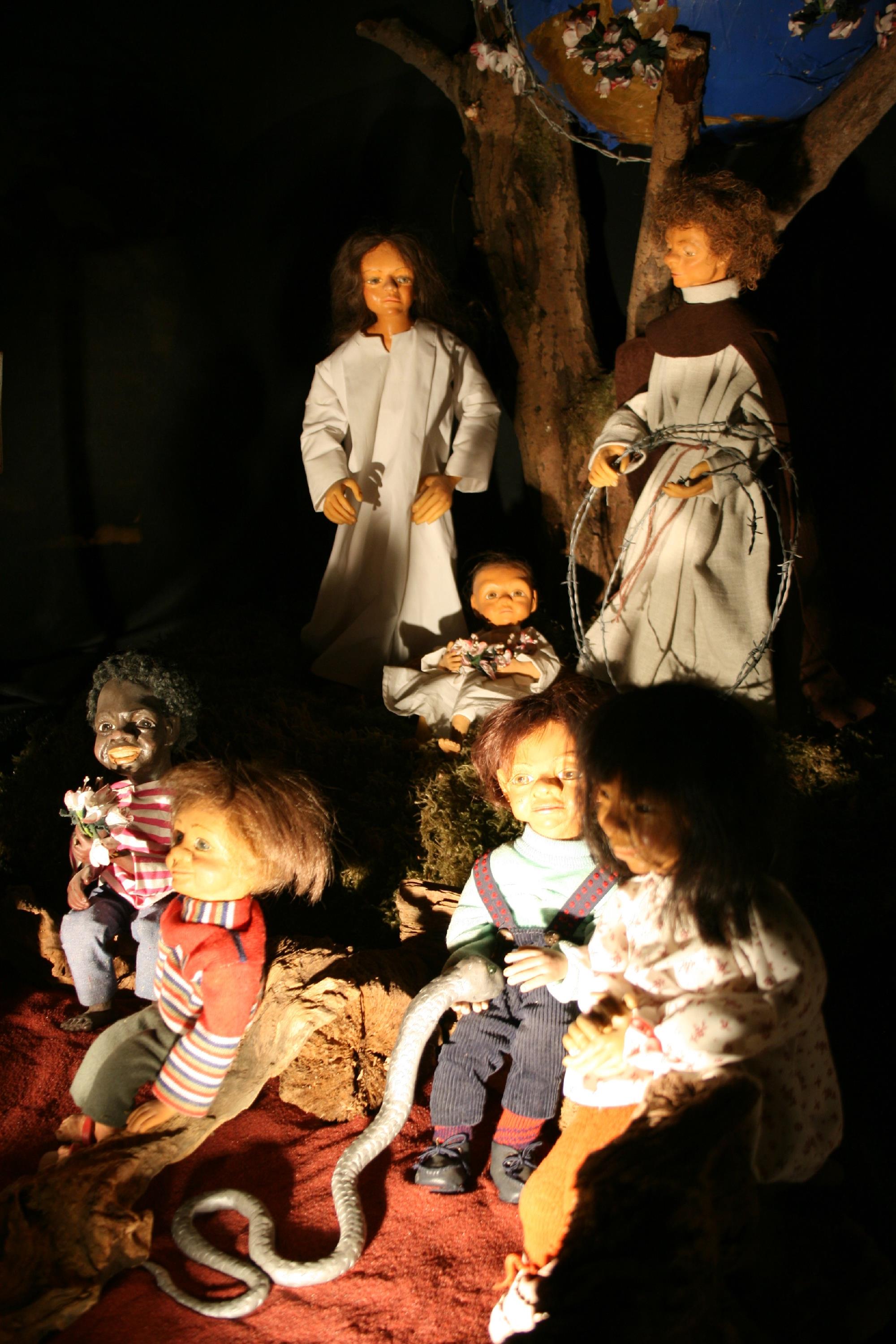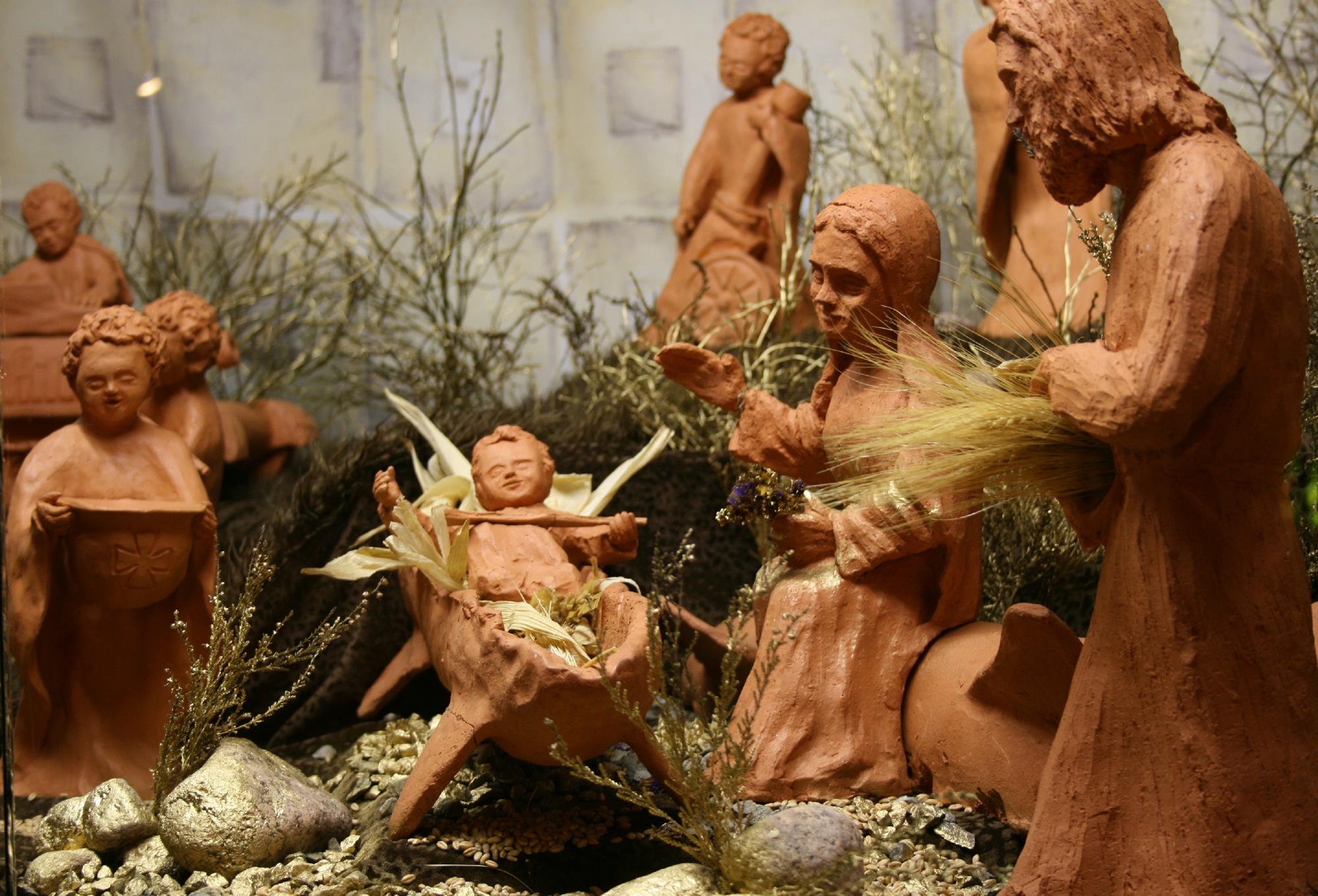An ever-recurring story, which always inspires . "The ArsKrippana: Is the home of all cribs in Losheim / Eifel, under the firmament sparkle mini-stars, from afar it sounds like an angel.
Sociocritical representations in the ArsKRIPPANA in Hergersberg-Losheim / Eifel.
Christmas is Nativity time. And at ArsKRIPPANA in Losheim, mainly beautiful and monumental works from more than 50 countries are shown.
But the exhibition leaders also give artists a space that looks at Christmas and our society on a more critical level and shows socially critical cribs. Among many, those of Mrs. Marie Therese Jung from Mönchengladbach.
This artist entered new territory in the 1980s and received not only praise for her critical engagement.
With her, the crib is no longer the soothing vision of a child being laid down on straw, but a socio-critical depiction in which she examines the way of life of our society today.
Her works raise questions and force the viewer to reflect.
It represents different elements that relate to our current economic and social system.
Particularly noteworthy is a work of art which is over 25 years old and unfortunately more relevant than ever.
"The Peace Crib"

Here the scourges of our society take shape in the different figures.
You see a worker who is depressed because he has been fired.
Then a torn family: The kids are wandering around nowhere, they are neither inside nor outside. They feel left alone because their parents separate. The mother has only wandering and shopping in mind, and the father seems to be stressed out because of his work and the need to make money at all costs.
The third world's poverty is not lacking: one sees a woman sitting, she is a mother and has lost her child because she did not have enough money to feed it.
Right next door one can see a stout man with a cigar, who must have everything. He destroys the emerald green forests and knows no scruples. He tramples on others to succeed. For him, only profit counts. He is driven by pure lust for power.
And then in the middle of the presentation, suddenly satisfied children of different ethnicities and cultures who play happily appear.
And here hope is present which offers the perspective of a more peaceful future.
You see tree stumps, sources of new life and they remind us of our origins: Mother Earth!
Then the cultural mix: we are all brothers who have come from one and the same family. The children - of different countries - have all come together and play with a snake.
One wonders why they play with a snake.
This animal which symbolizes evil.
Yes, right, but here, evil has no more power!
The children are free, they play completely carefree with the allegedly evil animal, as the prophet Isaiah has said in the Old Testament:
"The infant will play with the patterned viper, taking the little child with his hand into the hole of the otter" (11-8).
And then comes peace: Jesus Christ is born and his father, Joseph, frees the world. He removes the barbed wires of the earth, the greed, the vile, he frees them from evil. Joseph stands for all fathers who would have to change the world to protect their family.
This is just one of the special, critical depictions that can be seen in the exhibition.
Another atypical crib denounces the exaggerated build-up of arms.
"The dream of the angels."

Here, too, the artist, Berta Kals from Aachen, which unfortunately already passed away, tries to convey a message and is not limited to the simple consideration.
Weapons become musical instruments which strike a heavenly melody in the dream of the angels. The written text of the artist's husband complements the ensemble and invites the viewer to think about Christmas, the symbol of peace.
"The rockets SS and Pershing-2 become, in the dream of the angels, a bench for the mother
and to a cradle for the divine child.
The rifles, in the dream of angels, become flutes and
Children's toys.
The tanks, in the dream of the angels, become organs on which one
can play the joints of Bach.
The cannons, in the dream of the angels, become cellos, on which one plays music pieces.